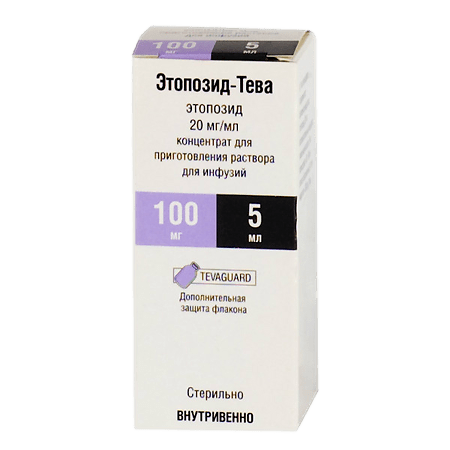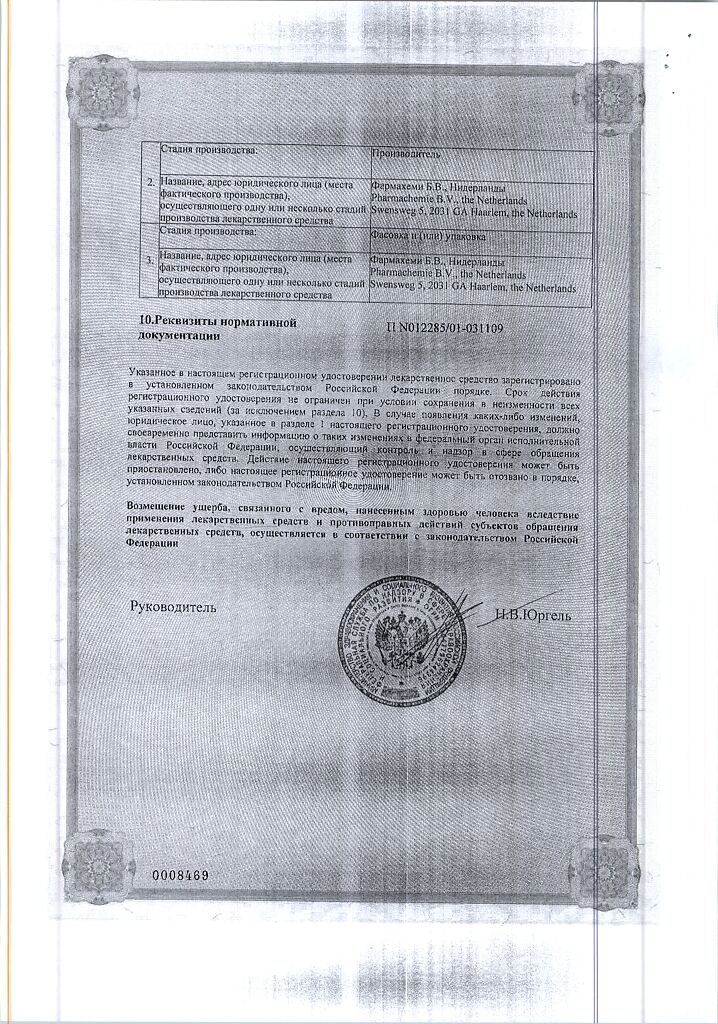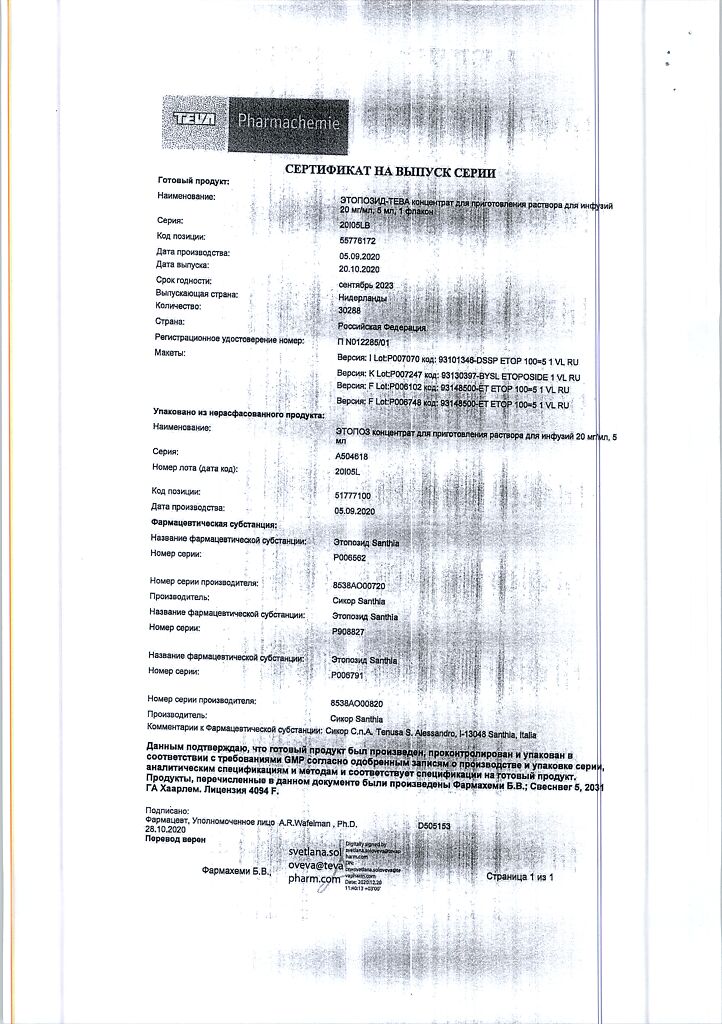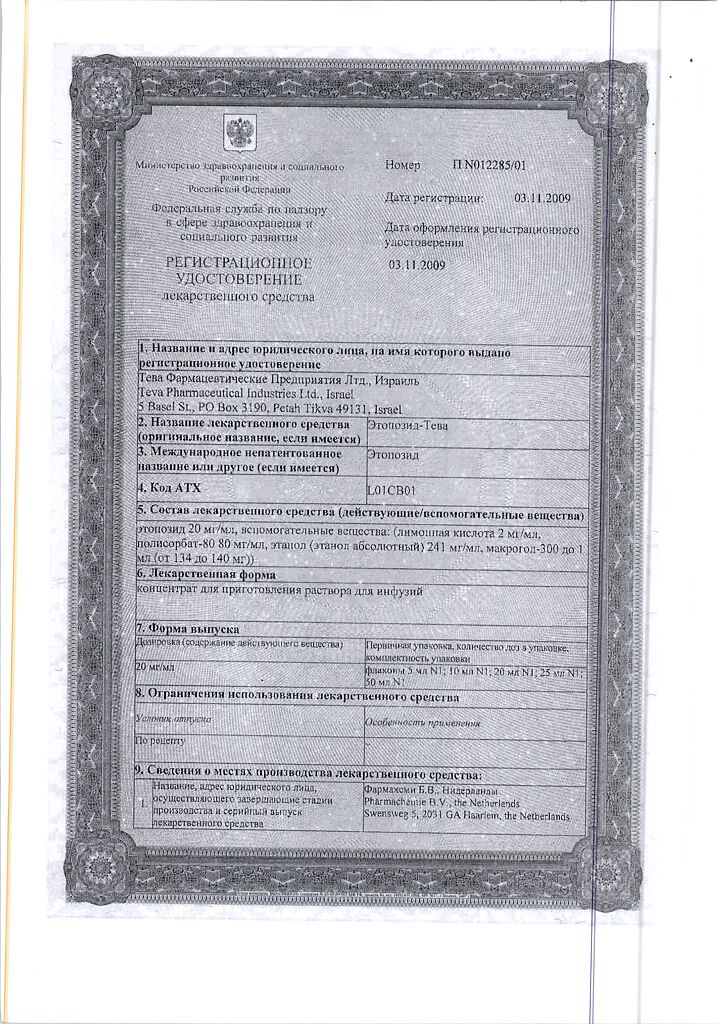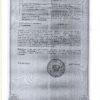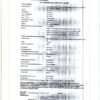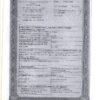No products in the cart.
Description
Pharmacodynamics
Atoposide is a semi-synthetic derivative of podophyllotoxin used as an antitumor agent. Etoposide has a cytotoxic effect by damaging DNA. The drug blocks mitosis, causing cell death in the G2 phase and the late S phase of the mitotic cycle. High concentrations of the drug cause cell lysis in the premitotic phase.
Atoposide also inhibits nucleotide penetration through the plasma membrane, which prevents DNA synthesis and repair.
Pharmacokinetics
After administration, the drug is found in saliva, liver tissue, spleen, kidney, myometrium, and, to a lesser extent, pleural fluid, bile, and brain tissue.
Atoposide penetrates the placental and, to a small extent, the blood-brain barrier. Values of the concentration of etoposide in cerebrospinal fluid vary from undetectable values to 5% of the concentration in blood plasma. There are no data on excretion of the drug with breast milk. Binding to plasma proteins is about 90%.
Atoposide is actively metabolized in the body. Excretion of etoposide is biphasic. In adults with normal renal and hepatic function the elimination half-life in the initial phase is approximately 1.5 h on average with the elimination half-life in the final phase of 5-11 h. Total clearance in adults ranges from 19-28 ml/min/m2. Renal clearance is 30-40% of the total clearance. Etoposide is excreted with urine as unchanged substance and metabolites (about 40% of the administered dose) within 48 – 72 hours. 2 – 16% is excreted with the feces.
Indications
Indications
The main indications for the use of Etoposide are:
germ cell tumors of the testicle and ovaries;
small cell lung cancer;
There are reports of the effectiveness of Etoposide in the treatment of:
bladder cancer;
lymphogranulomatosis;
non-Hodgkin’s lymphomas;
acute monoblastic and myeloblastic leukemia;
Ewing’s sarcoma;
trophoblastic tumors;
stomach cancer;
Kaposi’s sarcoma;
neuroblastoma.
Pharmacological effect
Pharmacological effect
Pharmacodynamics
Etoposide is a semisynthetic derivative of podophyllotoxin used as an antitumor agent. Etoposide has a cytotoxic effect due to DNA damage. The drug blocks mitosis, causing cell death in the G2 phase and late S-phase of the mitotic cycle. High concentrations of the drug cause cell lysis in the premitotic phase.
Etoposide also inhibits the passage of nucleotides through the plasma membrane, which interferes with DNA synthesis and repair.
Pharmacokinetics
After administration, the drug is detected in saliva, liver tissue, spleen, kidneys, myometrium, and to a lesser extent in pleural fluid, bile, and brain tissue.
Etoposide penetrates the placental and, to a small extent, the blood-brain barrier. Concentrations of etoposide in cerebrospinal fluid vary from undetectable values to 5% of plasma concentrations. There are no data on the excretion of the drug in breast milk. Plasma protein binding is about 90%.
Etoposide is actively metabolized in the body. Etoposide is released in a two-phase manner. In adults with normal renal and hepatic function, the half-life in the initial phase averages approximately 1.5 hours with a half-life in the final phase ranging from 5-11 hours. Total clearance in adults ranges from 19-28 ml/min/m2. Renal clearance is 30 – 40% of the total clearance. Etoposide is excreted in the urine in the form of unchanged substance and metabolites (about 40% of the administered dose) within 48 – 72 hours. 2 – 16% is excreted in feces.
Special instructions
Special instructions
Since etoposide is a cytotoxic antineoplastic drug, proper use and handling precautions must be followed. Infusions should only be administered by medical professionals who have sufficient experience with anticancer drugs. Medical personnel are recommended to wear gloves. In case of contact with skin or mucous membrane, the affected areas should be washed immediately with soap and water.
Bone marrow suppression is the dose-limiting effect of etoposide. Regular monitoring of blood composition must be carried out before starting treatment, during breaks and before each subsequent course of etoposide. If radiation therapy and/or chemotherapy was administered prior to initiation of etoposide therapy, a sufficient interval between these two types of therapy should be maintained to ensure recovery of bone marrow function. If the platelet count decreases below 50,000/mm3 and/or the absolute neutrophil count to 500/mm3, therapy should be discontinued until blood counts are completely restored.
If anaphylactic reactions occur, administration of etoposide should be stopped and treatment with corticosteroids and/or antihistamines and infusion therapy should be started.
Caution must be exercised when prescribing the drug to patients with hepatic or renal insufficiency.
Since this drug has mutagenic potential, it can cause damage to human sperm chromosomes; Therefore, men receiving etoposide therapy should use contraception.
Rarely, patients receiving etoposide therapy in combination with other antineoplastic drugs may develop acute leukemia, with or without a pre-leukemic phase.
Etoposide is intended only for administration in the form of intravenous infusion; other routes of administration are not permitted. The drug should be administered with caution to prevent extravasation during infusion. However, if extravasation does occur, the following measures are taken:
perfusion should be stopped as soon as a burning sensation appears;
make subcutaneous injections of a corticosteroid (hydrocortisone) around the affected area;
Apply 1% hydrocortisone ointment to the affected area until the erythema disappears;
Apply a dry bandage to the affected area for 24 hours.
Etoposide contains ethanol as an excipient: this may be a risk factor for patients suffering from liver disease, alcoholism and epilepsy, as well as for children.
Active ingredient
Active ingredient
Etoposide
Composition
Composition
1 ml (1 bottle) contains:
Active ingredients:
etoposide 20 mg (100 mg).
Excipients:
anhydrous citric acid,
Twin-80,
ethanol anhydrous,
propylene glycol 300.
In a bottle of 5 ml.
There is 1 bottle in a cardboard package.
Pregnancy
Pregnancy
The use of the drug during pregnancy and lactation is contraindicated.
Contraindications
Contraindications
Hypersensitivity to the drug;
severe myelosuppression;
severe liver dysfunction;
acute infections;
pregnancy and lactation period.
use in children: safety and effectiveness have not been established.
Side Effects
Side Effects
From the hematopoietic system: a decrease in the number of leukocytes and platelets is dose-dependent and is the main dose-limiting toxic manifestation of etoposide. The maximum decrease in the number of granulocytes is usually observed 7-14 days after administration of the drug. Thrombocytopenia occurs less frequently, and the maximum decrease in platelets is observed 9-16 days after administration of etoposide. Recovery of blood counts usually occurs on the 20th day after administration of the standard dose. Anemia is uncommon.
From the digestive system: nausea and vomiting occur in approximately one third of patients. Typically, these phenomena are moderate in nature, and it is rare to resort to discontinuation of treatment because of them. Antiemetic drugs are indicated to control these side effects. In addition, diarrhea, abdominal pain, stomatitis, esophagitis, dysphagia, and anorexia were noted. Mild temporary hyperbilirubinemia and increased serum transaminase levels sometimes occur. This most often occurs when doses exceeding the recommended ones are used.
From the cardiovascular system: with rapid intravenous administration, 1-2% of patients experience a temporary decrease in blood pressure, which is usually restored when the infusion is stopped and fluids or other supportive therapy are administered. If etoposide administration needs to be resumed, the rate of administration should be reduced.
Allergic reactions: symptoms resembling anaphylactic ones, such as chills, fever, tachycardia, bronchospasm, shortness of breath, apnea. These reactions usually occur during or immediately after administration of etoposide and resolve when the infusion is stopped. However, deaths associated with bronchospasm have also been reported. If such reactions occurred, therapy was stopped and, if necessary, vasopressor drugs, corticosteroids, antihistamines were administered and infusion-transfusion therapy was performed.
From the skin and skin appendages: reversible alopecia, sometimes leading to complete hair loss, occurs in approximately 66% of patients. The appearance of pigmentation, itching, and urticaria is also noted. In one case, a recurrence of radiation dermatitis was observed.
Other toxic manifestations: rarely observed peripheral neuropathy, drowsiness, fatigue, residual taste in the mouth, fever, transient blindness of cortical origin.
Interaction
Interaction
The antitumor effect of etoposide is enhanced when used in combination with cisplatin, however, it must be taken into account that in patients previously treated with cisplatin, the elimination of etoposide may be impaired.
Etoposide should not be mixed with other drugs in the same solution.
Overdose
Overdose
Cases of overdose with etoposide in humans have not been reported to date. It can be assumed that the main manifestation of an overdose would be toxic effects on the blood and gastrointestinal tract. In such cases, symptomatic therapy is mainly indicated. There are no specific antidotes.
Storage conditions
Storage conditions
In a place protected from light, at a temperature of 15–25 °C
Shelf life
Shelf life
3 years
Manufacturer
Manufacturer
Farmahemi B.V., Netherlands
Additional information
| Shelf life | 3 years |
|---|---|
| Conditions of storage | In a light-protected place at 15-25 °C |
| Manufacturer | Pharmahemi B.V., The Netherlands |
| Medication form | concentrate for preparation of infusion solution |
| Brand | Pharmahemi B.V. |
Related products
Buy Etoposide-Teva, 20 mg/ml 5 ml with delivery to USA, UK, Europe and over 120 other countries.

